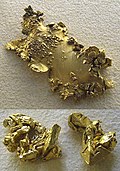Official symbols
| Symbol | Name | Image | Adopted | Remarks |
|---|---|---|---|---|
| State Flag | Flag of Victoria |  | 12 November 1877 | |
| State Badge | State Badge of Victoria |  | 4 February 1870 | |
| State Coat of arms | Coat of arms of Victoria |  | 6 June 1910 | Granted by King George V |
| State Motto | Peace and Prosperity | 6 June 1910 | Granted with other elements of the coat of arms | |
| State Floral Emblem | Common (pink) heath Epacris impresa |  | 11 November 1958 | |
| State Bird Emblem | Helmeted honeyeater Lichenostomus melanops cassidix |  | 10 March 1971 | |
| State Animal Emblem | Leadbeater's possum Gymnobelideus leadbeateri |  | 2 March 1971 | |
| State Marine Emblem | Common seadragon Phyllopteryx taeniolatus |  | 31 October 2002 | |
| State Tartan | Victorian state tartan |  | June 2008 | Recorded in November 1998, and subsequently registered in the Scottish Register of Tartans (SRT) as a district tartan. [1] [2] In 2005, the State of Victoria acquired its copyright, [2] and in June 2008 the then Premier of Victoria, John Brumby, announced that it had been adopted as the Victorian state tartan. [2] [3] [4] |
| State Mineral Emblem | Gold |  | 6 September 2012 | |
| State Fossil Emblem | Koolasuchus Cleelandi |  | 13 January 2022 | |
| State colour | Navy Blue | Navy blue Pantone 541 | ||
| State Government Logo | Victoria State Government logo |  | August 2015 | |
| State Soil | Mottled Brown Sodosol | 2005 | Derived from a shortlist of 11 soils nominated by the Australian Society of Soil Science Inc Victorian Branch Committee. | |